Linseed oil is one of the most traditional treatments for nourishing and protecting wood. Its ability to penetrate fibers, reveal grain, and create a warm patina appeals to lovers of natural materials. However, behind these undeniable qualities, linseed oil presents risks for wood that deserve our full attention. Between self-ignition, potential toxicity, and precautions for use, it is important to understand how to use this bio-sourced product safely. Whether raw, boiled, or polymerized, each variant has its own specificities and hazard levels. Let's take a look at the risks associated with using linseed oil for wood and the methods for effectively neutralizing them.
Our article in brief:
Linseed oil for wood presents significant risks despite its natural protective and finishing qualities.
- Dangerous self-ignition : Soaked rags and materials may spontaneously ignite when drying
- Variable toxicity depending on the formulations: risks of skin, respiratory and digestive disorders if swallowed
- Essential precautions : wearing protective equipment, adequate ventilation and safe disposal of contaminated materials
- Safer alternatives available : hard oils, natural waxes and water-based products offering similar performance
Summary
Self-ignition of linseed oil for wood: a danger that threatens your safety
The main risk associated with linseed oil and wood lies in its propensity for self-ignition. This is a chemical phenomenon that is often underestimated but is very real. This natural wood product undergoes an oxidative polymerization reaction during drying. This reaction spontaneously generates heat which, under certain conditions, can reach temperatures high enough to trigger combustion without any apparent flame.
Materials soaked in linseed oil, such as rags, brushes, and sponges, are the main sources of this hazard. When left in a ball after use, the heat produced by oxidation accumulates in the center and cannot dissipate. The temperature gradually increases until it reaches the ignition point of the support material, causing a spontaneous fire to start.
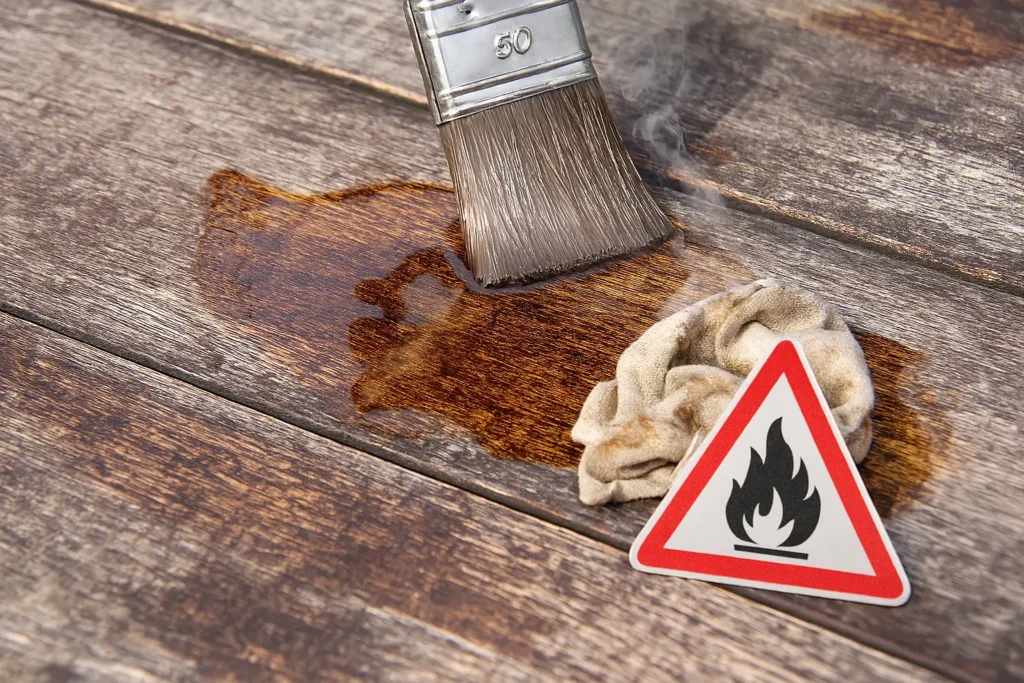
Sawdust mixed with linseed oil also poses a major risk, particularly in workshops. crafts and carpentry. Its large surface area in contact with air accelerates the oxidation reaction and multiplies the potential sources of ignition. Hot weather conditions or poorly ventilated environments therefore considerably increase this fire danger.
Many domestic disasters and workshop fires originate from the use of rags soaked in linseed oil improperly stored. These tragedies could have been avoided by better understanding the risks and applying appropriate preventive measures when using this wood treatment.
The dangers of linseed oil for wood on your health
The Skin Dangers of Flaxseed Oil
When in contact with the skin, linseed oil can cause various allergic reactions and skin irritations. Symptoms usually manifest as:
- Of the forms of redness
- Of the itching
- Of the localized eruptions in exposed areas.
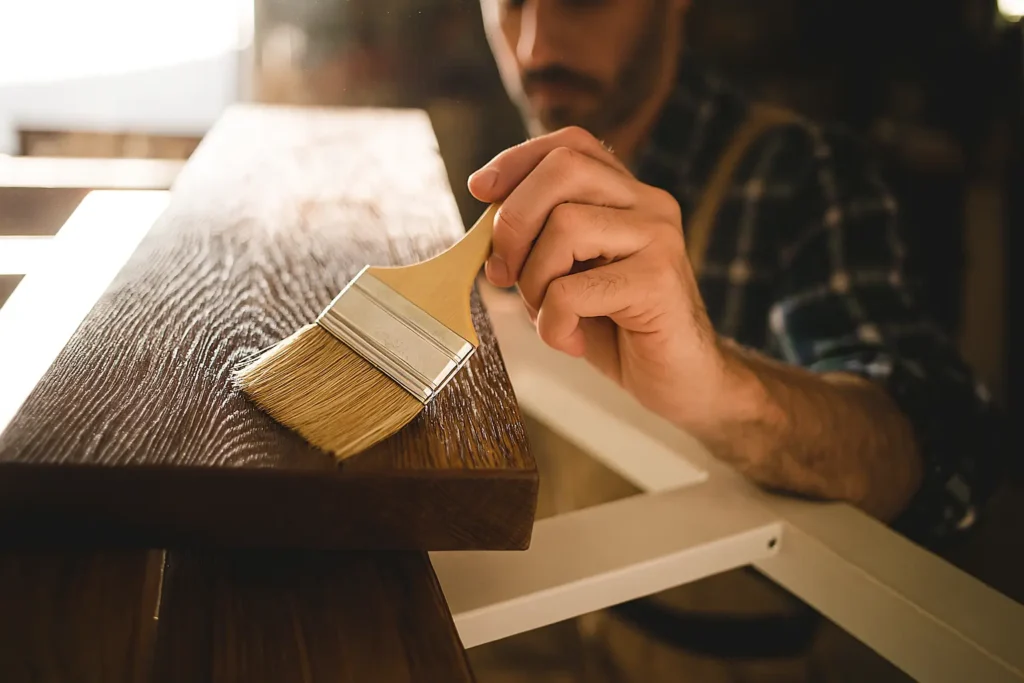
These reactions vary considerably depending on individual sensitivity. They can also intensify with repeated exposure to the product, creating progressive sensitization.
People with a history of skin allergies are at increased risk of developing severe reactions to linseed oil when used on wood. In extreme but fortunately rare cases, prolonged exposure can lead to contact dermatitis, or even anaphylactic reactions requiring immediate medical attention.
Impact on the respiratory system
Prolonged inhalation of linseed oil vapors poses a significant respiratory hazard. Common symptoms include:
- throat irritation
- persistent cough
- headaches
- nausea.
Boiled linseed oil is even riskier because of the metallic driers it contains, including manganese and cobalt.
These drying accelerator compounds improve the product's performance but increase its toxicity through inhalation. People with asthma or chronic respiratory conditions should be extra vigilant and use well-ventilated environments when applying this treatment to wood.
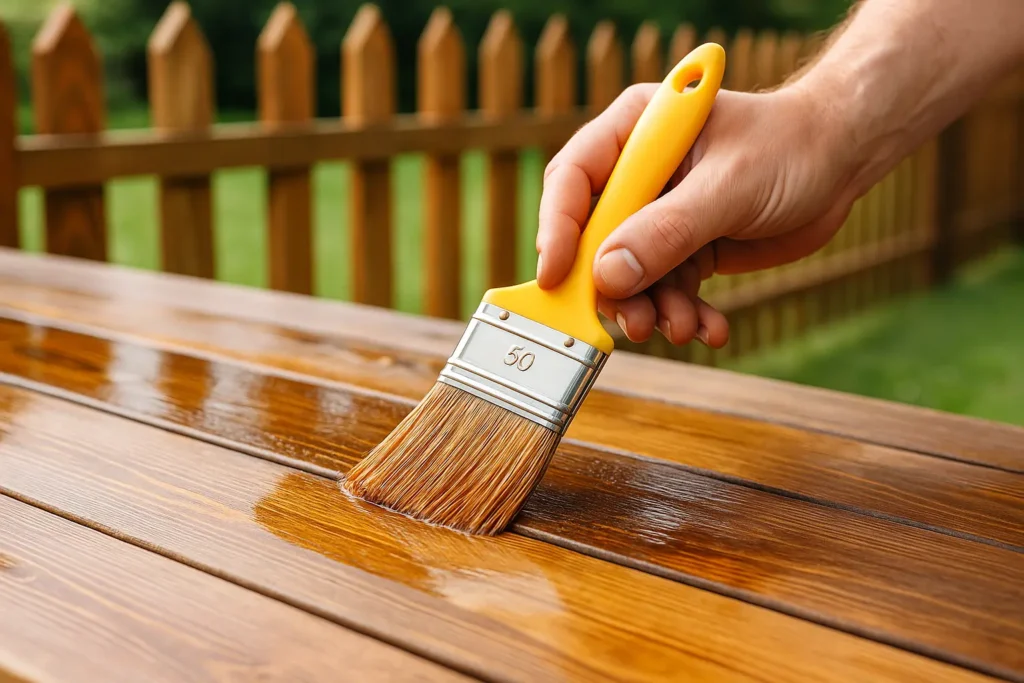
Risks associated with ingestion
Although rare, accidental ingestion of linseed oil intended for wood treatment can lead to serious complications. Oxidized oil causes severe digestive problems (diarrhea and vomiting), or even kidney failure in the most serious cases.
A distinction should be made between edible linseed oil, which is specifically treated for consumption, and linseed oil for wood, which is intended for wood finishing and often contains toxic additives. The latter should be kept out of reach of children and clearly labeled to avoid confusion.
Using Linseed Oil: Techniques to Safely Protect Your Wood
Optimal preparation of the woody support
A successful and safe use of linseed oil for wood begins with careful preparation of the material. Carefully sand the wood with a 150-180 grit sandpaper to open the pores of the wood and promote absorption of the product. Then meticulously dust the wood to remove any particles that could compromise the penetration of the oil.
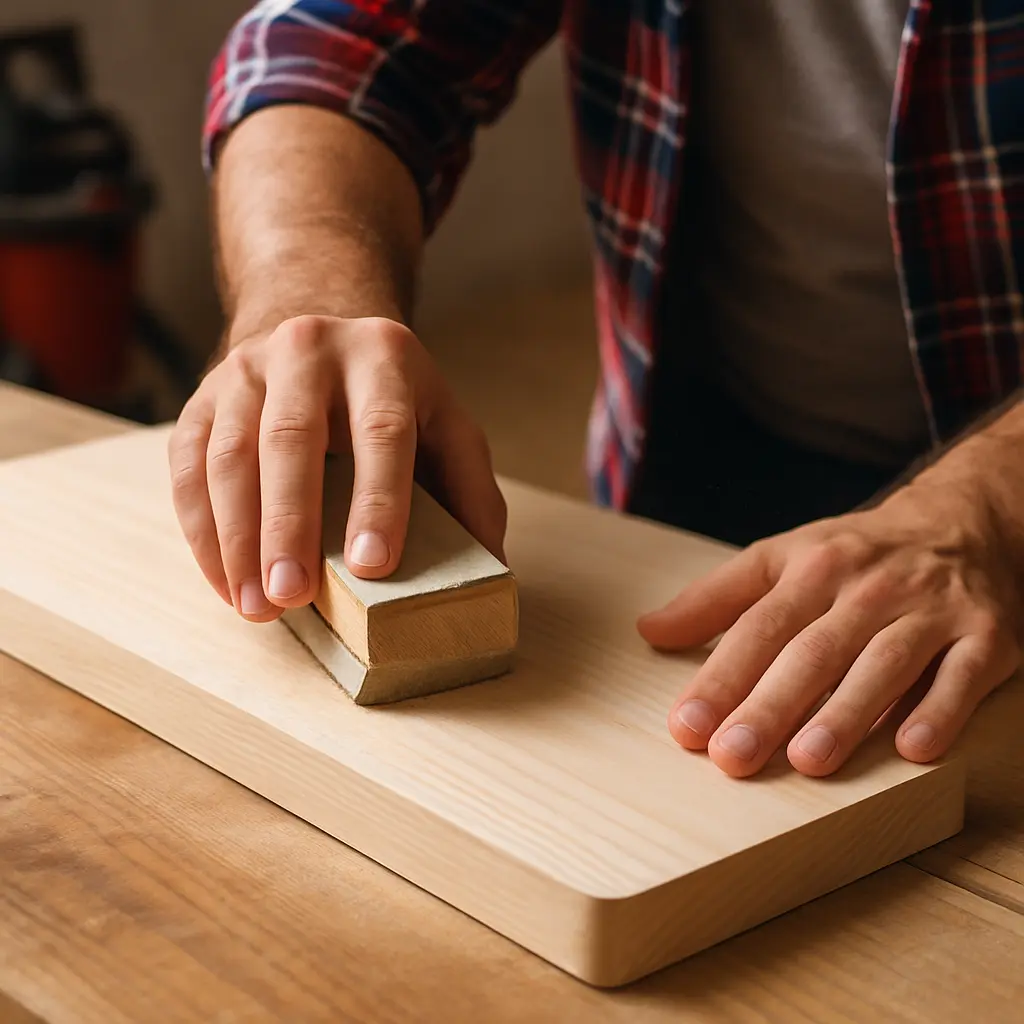
Preparation varies depending on the type of wood being treated. Soft woods like pine or fir require gentler sanding to avoid damaging their delicate fibers. Hardwoods like oak or beech require more vigorous sanding to maximize their responsiveness to treatment.
Linseed oil and turpentine dosage calculator
| Type of wood | Recommended mix | Drying time | Average yield |
|---|---|---|---|
| Softwoods (pine, fir) | 50% linseed oil / 50% turpentine | 24-72 hours depending on conditions | 8-10m² per liter |
| Hardwoods (oak, beech) | 33% linseed oil / 67% turpentine | 48-96 hours depending on conditions | 10-12m² per liter |
| Exotic woods | 25% linseed oil / 75% turpentine | 72-120 hours depending on conditions | 12-15m² per liter |
Application method for a perfect finish
For optimal use, adapt your technique to the type of wood. On soft woods, apply a mixture of equal parts linseed oil and turpentine. For hardwoods, use a ratio of one-third oil to two-thirds turpentine to improve penetration.
Always apply the product in the direction of the wood grain using a soft brush or lint-free cloth. Allow the oil to penetrate the fibers for 15 to 30 minutes before carefully wiping off any excess., which could cause drying problems and increase the risk of self-ignition.
Allow sufficient drying time between coats, typically 12 to 24 hours depending on weather conditions. Light sanding between coats with very fine sandpaper improves adhesion and finish quality. Maintenance should be repeated every 6 months to 2 years depending on UV and humidity exposure.
Essential safety precautions for applying linseed oil to wood
Protective equipment to prevent risks
Safe handling of linseed oil for wood requires the use of appropriate personal protective equipment. Nitrile gloves provide an effective barrier against skin contact and potential allergic reactions. Unlike latex gloves which can degrade upon contact with solvents, nitrile models retain their protective integrity throughout the application..
A respirator with filters suitable for organic vapors is essential, especially when using boiled linseed oil, whose metallic driers are more toxic if inhaled. Supplement this protection with safety goggles to prevent accidental splashes into the eyes, an area particularly susceptible to irritation.
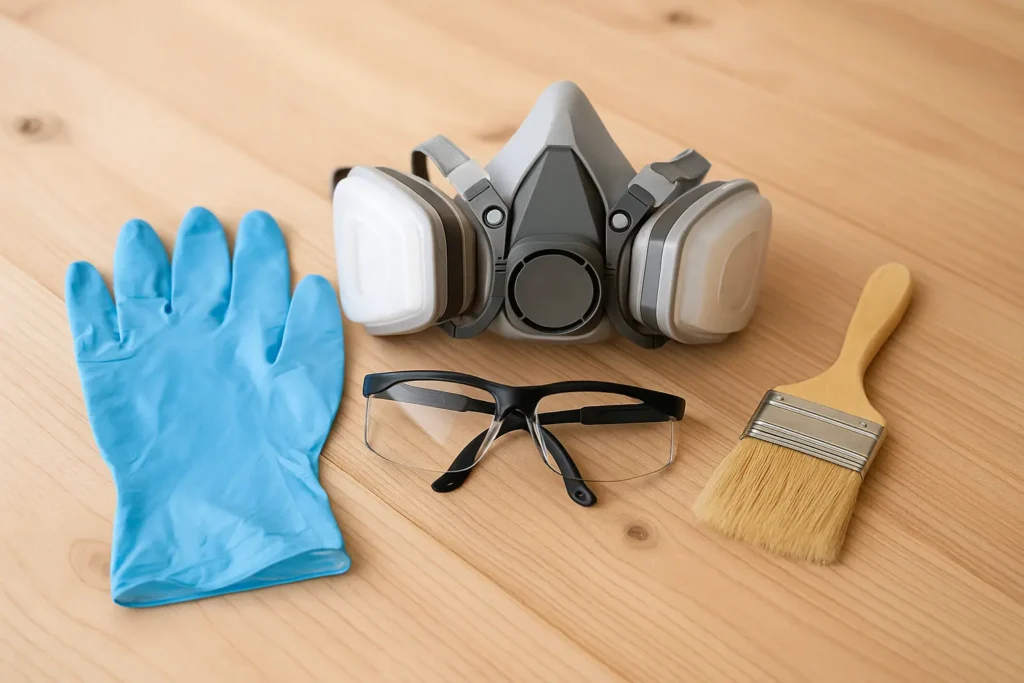
Safe working environment
Work only in a well-ventilated area, ideally outdoors or in a room equipped with an effective air extraction system. Good air circulation limits the accumulation of toxic fumes and reduces the risk of prolonged inhalation. It also helps disperse the heat produced during oxidation, minimizing the risk of self-ignition.
- Maintain a moderate room temperature (15-25°C) for optimal drying
- Keep away from any source of heat or flame during and after application
- Have a fire extinguisher suitable for Class B fires available in the immediate vicinity
Safe disposal of used materials
As explained previously, Never leave rags or tools soaked in linseed oil in a ball or in a closed container.. Heat buildup during the oxidation process can quickly reach the point of autoignition.
After use, always lay your rags flat in a well-ventilated outdoor area until completely dry. Alternatively, submerge them in a bucket of water and then place them in an airtight metal container before disposal. Clean your tools thoroughly with turpentine followed by soapy water to remove any hazardous residue.
Different linseed oils for wood: which formulation should you choose depending on the danger level?
Raw flaxseed oil: natural but riskier
Raw linseed oil is the most natural and least processed version of the product. Extracted by cold pressing flax seeds, it retains all of its wood-nourishing properties. Its exceptional penetrating power makes it a preferred choice for deeply nourishing the fibers of wood and revealing the natural beauty of its grain.
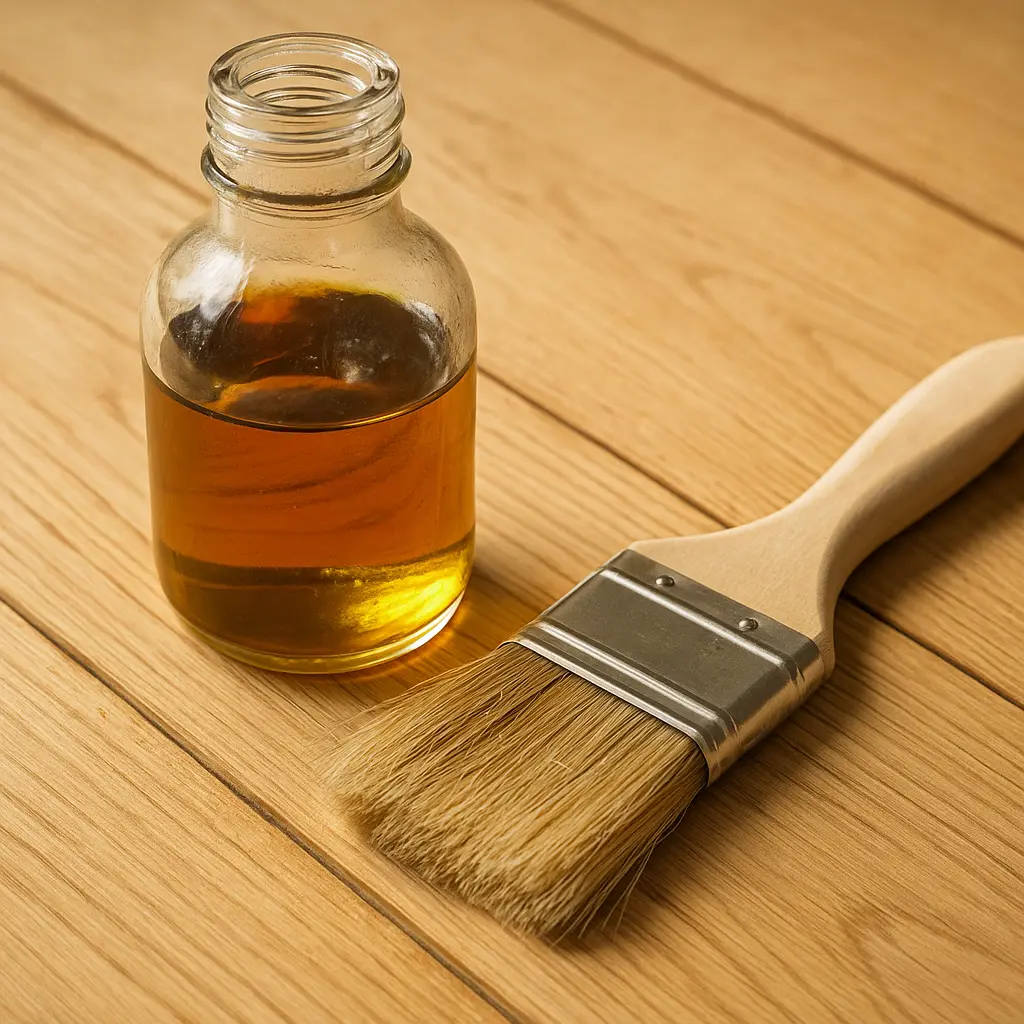
However, the drying time of raw linseed oil is extremely slow… It can in fact reach several weeks under unfavorable conditions, which considerably increases the risks of self-ignition. The oxidation reaction continues over an extended period, multiplying the opportunities for heat accumulation in the soaked materialsThis formulation is ideal for lightly used interior woods, but requires extra care when applying.
Boiled linseed oil: increased effectiveness and toxicity
Boiled linseed oil contains metallic driers that significantly accelerate the polymerization process. Its drying time, reduced to 24-48 hours, makes it a more practical option for DIY projects and applications on exterior wood exposed to UV rays and moisture. The superior durability of the resulting finish justifies its popularity among craftsmen.
However, the metallic additives it contains increase its toxicity through inhalation and skin contact. The risk of self-ignition remains present, although slightly reduced compared to the raw version thanks to the faster drying which limits the duration of the exothermic oxidation reaction.
- Always wear reinforced protective equipment when using it.
- Ensure optimal ventilation during and after application
- Strictly follow the procedures for disposing of soiled rags and tools
Polymerized linseed oil: improved safety but more complex application
Stand oil or polymerized linseed oil undergoes a heat treatment at over 280°C, which modifies its molecular structure. This process gives it exceptional resistance to water and external aggressions, as well as superior durability as a protective treatment for wood. Its main safety advantage lies in a significantly reduced risk of self-ignition.
However, its high viscosity limits its ability to penetrate wood fibers, making its application more technical. It mainly forms a protective film on the surface rather than a deep impregnation. This characteristic makes it particularly suitable for exterior finishes subject to demanding environmental conditions.
Safer alternatives to linseed oil to protect your wood naturally
Hard oils: improved performance and safety
Hard oils are a modern and safer alternative to traditional linseed oil treatments. These formulations combine different vegetable oils with natural resins to create a product with excellent protective performance. Their faster and more stable polymerization significantly reduces the risk of self-ignition while ensuring superior resistance to water and stains..
These products effectively penetrate the wood fibers while forming a microporous surface protection that allows the material to breathe. This feature prevents trapped moisture problems and extends the durability of the treatment. They are generally applied in very thin layers, limiting the amount of product used and therefore the associated risks.
Natural waxes for an eco-friendly finish
Natural waxes such as beeswax, carnauba wax, or soy wax offer a particularly safe and environmentally friendly alternative. They create a satin finish that highlights the wood's grain while providing effective protection against minor daily wear and tear. Their application poses no risk of self-ignition and generates very few toxic fumes.
- Beeswax nourishes the wood deeply and provides incomparable warmth
- Carnauba wax provides superior water and scratch resistance
- Vegetable waxes offer a completely vegan and bio-sourced option
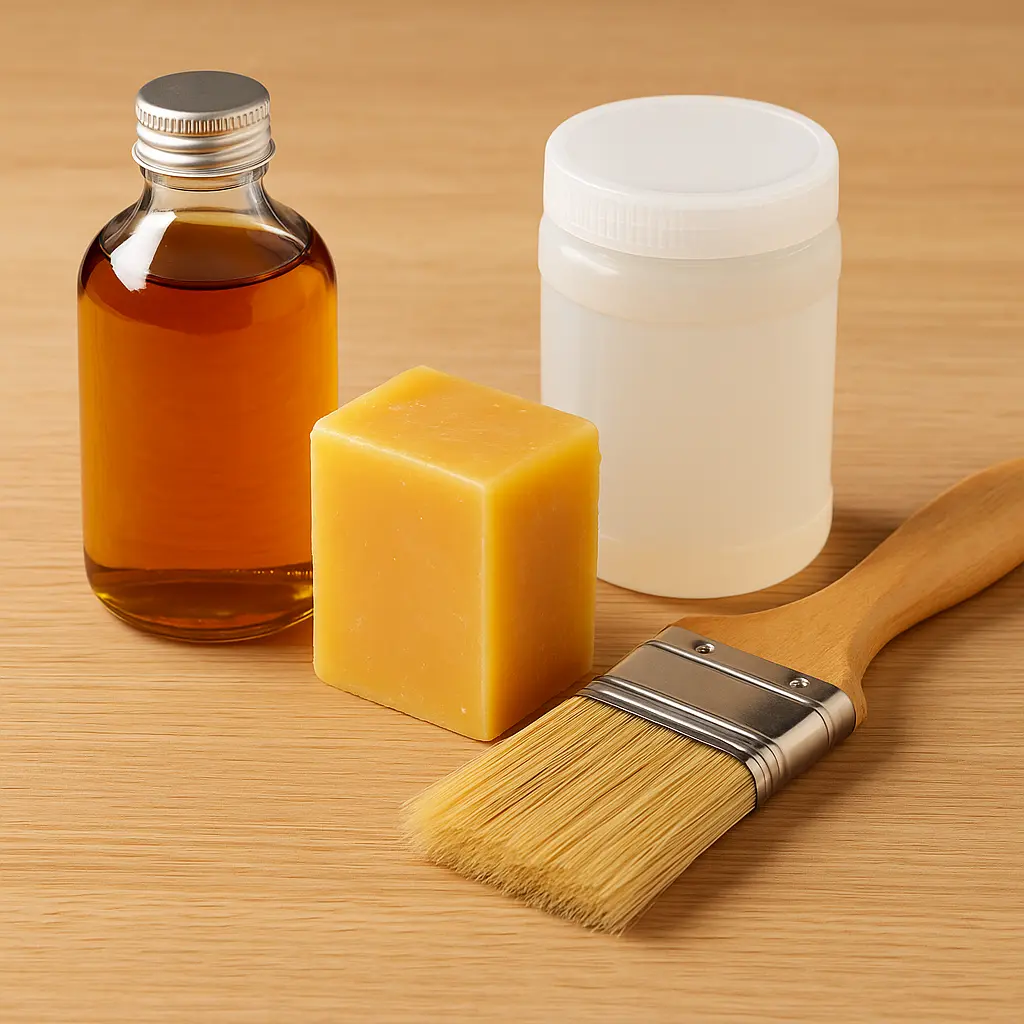
Water-based finishing products
The development of water-based technologies has revolutionized the wood treatment industry. These environmentally friendly products virtually eliminate the risk of ignition and drastically reduce inhalation toxicity. Modern water-based stains and varnishes now offer comparable performance to traditional solutions while preserving the wood's natural appearance.
Their quick drying is a significant advantage for DIY projects and interior renovations. Easy cleaning of tools with simple soapy water eliminates the need for hazardous solventsThese contemporary alternatives fit perfectly into a craft approach that respects the environment and the health of users.
Frequently Asked Questions – Linseed Oil for Wood
What are the benefits of linseed oil for wood?
Linseed oil is a natural treatment with multiple benefits and is highly valued for wood. It penetrates deep into the fibers, nourishing them, protecting them from moisture, and enhancing the grain. Applied regularly, it extends the life of the wood while giving it a beautiful satin patina, without forming a surface film like varnish.
Is linseed oil dangerous for wood?
Yes, despite its benefits, flaxseed oil can present risks if it is misused. The The main danger is self-ignition soaked rags left in a ball. It can also cause skin and respiratory irritations, especially in its boiled form. Good ventilation, the wearing of protective equipment and rigorous disposal of contaminated materials are essential.
Can you use linseed oil on wood outdoors?
Yes, but with cautionRaw linseed oil is not very suitable for outdoor use due to its long drying time. It is preferable to use an oil porridge Or polymerized, more resistant to humidity and UV rays. For exposed wood, it is advisable to apply several thin coats and repeat the treatment every 6 to 12 months for effective protection.
What is turpentine used for with linseed oil?
Turpentine is used for thin the linseed oil and improve its penetration into the wood fibers. This mixture facilitates application, reduces drying time and improves the adhesion of successive coats. It is particularly useful for the first coat on raw or dense wood.
What dosage should be used between linseed oil and turpentine?
THE dosage depends on the type of wood :
– Softwoods (pine, fir) : 50 % linseed oil / 50 % turpentine
– Hardwoods (oak, beech) : 33 % linseed oil / 67 % turpentine
– Exotic woods : 25 % linseed oil / 75 % turpentine
This mixture is applied in very thin layers, always in the direction of the wood, with careful wiping to avoid any excess.









